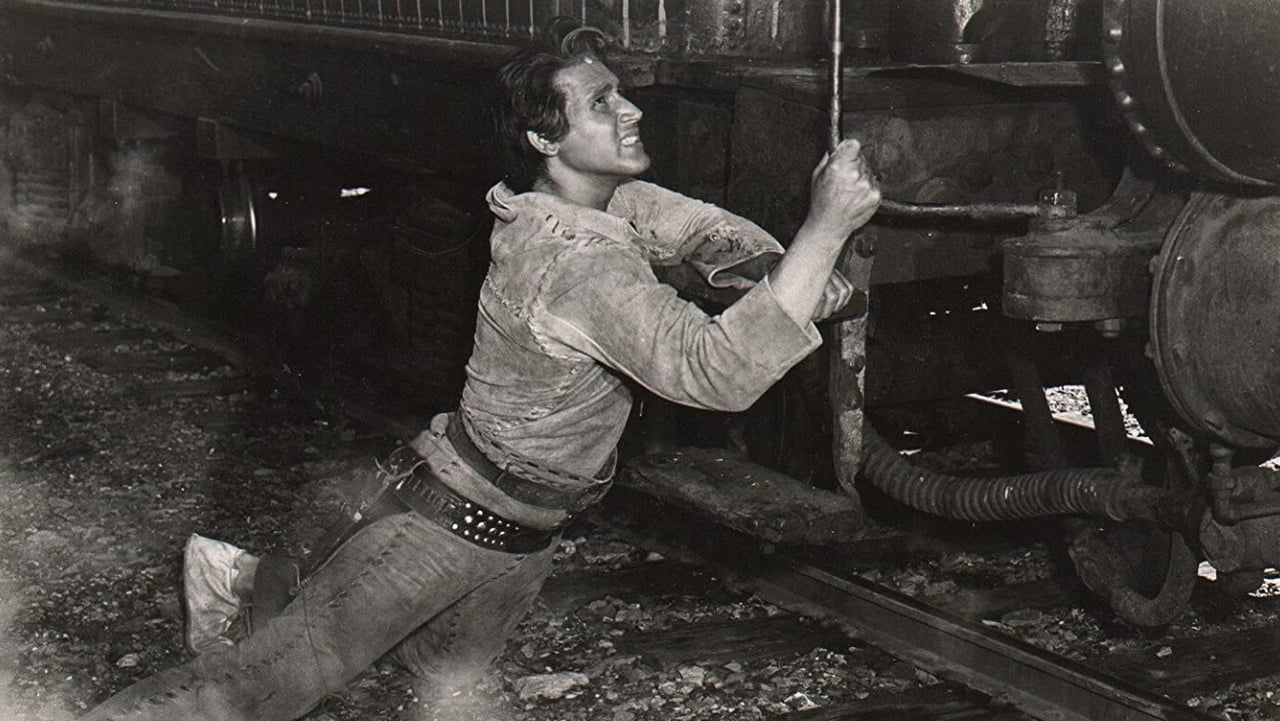

Stephen McNally (Steve Davis), Alexis Smith (Mary Williams), Howard da Silva (Cavanaugh), Ed Begley (Warden Haynes), Dan Riss (George Armstrong), Roy Roberts (Charles DeHaven), Whit Bissell (Sam Wallace), Armando Silvestre (Indian Joe), James Arness (Russell), Richard Jaeckel (Nate), Frankie Darro (Rufe), Felipe Turich (Pete), Gene Evans (Shep), Richard Egan (Beale), Frank Fenton (Gilson), Emerson Treacy (Ben), Harry Tyler (Pap), Charles Evans (senate committee chairman), Ed Cassidy (sheriff), Jay Barney Zed), Eric Alden, Ralph Brooks (mail clerks), John L. Cason (Red Monte), Wheaton Chambers, Howard M. Mitchell (conductors), Chick Chandler (waiter), John Cliff, John Indrisano, Herbert Naish (guards), Ed East (blacksmith), Roy Engel (ticket seller), Captain Garcia, Jennings Miles (prisoners), Harold Goodwin, Guy Wilkerson (cowboys), Charles McAvoy (spectator), Forrest Matthews (Edmund), Grandon Rhodes (Senator Dowell), Frank Richards (prison contact), Harry Wilson (losing bettor), Frankie Van (referee), Tony Roux (Mexican proprietor), and Forbes Murray, Edward Rickard, Sayre Dearing, Fred Aldrich.Narrated by Gerald Mohr.Director: REGINALD LeBORG. Screenplay: Harry Essex, Leonard Lee. Story: Robert Hardy Andrews. Photography in Color by Technicolor by Russell Metty. Film editor: Edward Curtiss. Music director: Joseph Gershenson. Art directors: Bernard Herzbrun, Hilyard Brown. Set decorators: Russell A. Gausman and John Austin. Costumes designed by Bill Thomas. Make- up: Bud Westmore, assisted by Gene Hibbs. Hair styles: Joan St Oegger, assisted by Helen Turpin. Technicolor color consultant: William Fritzsche. Songs: "Endlessly" (Smith) by Kim Gannon and Walter Kent; "Take Me To Town" (chorus) by Dan Shapiro and Lester Lee. Choreographer: Harold Belfer. Camera operator: Philip H. Lathrop. Still photographs: Max Nippell. Grip: Dean Paup. Continuity girl: Dorothy Hughes. Assistant director: Ronnie Rondell. Production manager: Jack Gertsman. Sound recording: Leslie I. Carey and Frank Moran. Western Electric Sound Recording. Producer: Aubrey Schenck.Copyright 4 October 1950 by Universal Pictures Co., Inc. A Universal-International Picture. New York opening at Loew's Criterion: 21 October 1950. U.K. release: 20 November 1950. Australian release: 28 December 1950. 87 minutes. SYNOPSIS: Post office trains are threatened by well-organized outlaws.NOTES: Switching from Warner Brothers, this film marked Alexis Smith's first venture under her Universal contract.COMMENT: A top western in all departments. Most entertaining, richly produced, excitingly staged, reasonably suspenseful, handsomely photographed and gorgeously costumed, it also boasts a fascinating cast of interesting players. Even Reginald LeBorg's direction ranks way above his usual level of so-so competence. Naturally, train buffs will be in seventh heaven, but I also enjoyed all the telegraph lore, the awesome natural scenery, the lavish period props and interiors, the well-honed music score, not to mention the peppery dialogue and novel bits of business, plus the action, fights, hard riding and stunts.
... View MorePretty good Western that gets better as it goes along. Railroad agent Steve Davis (McNally) goes undercover to catch an elaborate gang of train robbers. Along the way, he meets lovely songstress Mary Williams (Smith), but much worse, has to go to prison to establish his outlaw cover. The gang, it turns out, has respectable confederates but we can't be sure who they are.There're several good surprises, plus some nice touches from director LeBorg— e. g. a wounded Indian Joe trying to hook on the train, the final scene that hits the right notes, a frantic outlaw (Jaeckle) atop an exploding baggage car. Also, that rock formation of the gang's hideout is impressive as heck, with its spindly ladders to the caves at the top. Then there's a splash or two of great blue sky scenery.The supporting cast is also notable—Begley, DaSilva, Evans and Jaeckle, plus a young, curly-haired James Arness and-- look quickly—Richard Egan as a prison guard. Universal Studio did a number of these Technicolor Westerns at the time, using solid performers and location filming. None that I've seen reach the first rank, but do remain solid entertainment for horse opera fans, including this one.
... View MoreI saw the trailer of this film when I was less than ten years old, here in Brazil, where it was named "A Fogo e a Sangue". I was fascinated by the few scenes I saw, specially one that shows Stephen McNally boxing. The scenery and color cinematography were astonishing. Being underage I could not see the film. I saw it recently, more than fifty years after and went through a great Proustian experience. Unlike many westerns that age and become naive or too predictable or full of clichés, this one maintains its appeal. McNally is the detective that is sent to find out who is behind a continuous robbery of the train carrying mail. He was boxing for a living and does not want to give it up for a low salary, but when he takes a good look at his face, and sees how it is becoming deformed, he decides to carry on the mission. Alexis Smith is the saloon singer he falls in love with, she is quite a presence. McNally pretends he is an outlaw and is sent to prison where he becomes friendly with one of the key members of the gang. There are constant scenes of action, and never a dull moment. This is a really good one.
... View MoreIt was amusing to discover that the Director of this pleasant little diversion directed it apparently between two Joe Palooka movies. Now they are tough films to watch. However, although this story line is a bit weak,the film does have a couple of things going for it. Alexis Smith is an attractive heroine. Her character has a life changing decision to make and it works well. The film also attempts to flesh out the role of the Railroad in small communities in the west. The Railroad Club comes off as another saloon but the very fact that its a club is an interesting historical footnote. Much of the exterior scenery is beautifully presented, although the hideout left something to be desired. A good wet Sunday amusement.
... View More